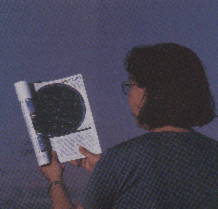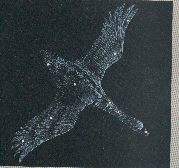
| 
|
Tools and Materials The only tools you will need at first will be your eyes, a star map (you can get these from Astronomy magazines) and perhaps a pencil and a pad of paper.
Later on once you become more familiar with the sky you will probably want a telescope and binoculars to help you view things up close and so you can make more detailed observations of the things you've already seen with the unaided eye. Not to mention the things you can't see with the unaided eye.
But if you are just starting out I suggest getting a star chart, a flashlight, a blanket, maybe something warm to drink, and a pencil and paper and then look for the most obvious things like constellations, the moon, and the planets. These objects are in the heavens most of the year and by observing these you will soon get a sense of where other objects are in the sky. 
The Celestial Sphere:
degrees of arc? Minutes & Seconds? What is this 2nd grade and are we relearning how to tell time or something?
No... There are 360 degrees in a circle. Each degree in the sky represents 60 arc minutes... each minute is broken into arc seconds... so 30 arc minutes is half a degree, and 30 arc seconds would be half an arc minute.
at arms length a closed fist takes up 10 degrees of sky. The moon is only 1/2 half a degree large. So by using these measurements you can point out where an object is relative to north south east or weat in the sky.
| 
| 
| 
| 
| 
|
Here you can learn how to start observing the heavens. How to observe the night sky. 
You should first learn the constellations. Start out learning one or two at a time... The patterns formed by bright stars in the sky make up pictures that can help guide you through the heavens. You will have to learn them before you can start making your way around the sky at night.
Why not try and get away from the lights of the city... If you live in the country then great. You do want to be away from the glow of artificial light created by street lights cars and buildings.
Get a blanket or a lawn chair grab something to munch on like chips or sandwiches and maybe a thermos of coffee or coco but you will want something warm to drink. You can take a long music or what ever else you would like to bring to entertain yourself while out observing and learning the night sky.
Try to find a wide open space unobstructed by buildings hills trees and other objects. Lay down your blanket get out your star chart (Make sure it matches the month you are in and the year) and begin looking for the bright stars of the constellations.
Amatuer Astronomy is a relaxing hobby that many people have enjoyed since man looked up at the sky and began to ask what is out there. Have fun learning new things. I hope that the awe and wonder I've found in this hobby will pass on to you as well. 
| 
| 
| 
| 
| 
|
Terminology Constellations: Pictures created by connecting lines from the brightest stars in the sky to one another. These line pictures create star maps for observers to use when charting the sky to view objects in the heavens.
The Moon: Our closest neighbor in space and our planets own satellite. This rocky neighbor of ours has forever been the most noticable object in the heavens next to the sun and when viewed through binoculars or even a low power telescope it reveals a world of wonder to the viewer.
The Planets: Our eight other neighbors in the heavens...
Mercury, Venus (Brightest Object next to the moon in the night sky), Mars, Jupiter, Saturn, Uranus, Neptune, and Pluto.
Comets: Gaseous dirty snow and dust balls that have eliptical orbits and from time to time are pulled into the inner solar system by the pull of the Suns gravity. When nearing the Sun the comets Coma begins to form. The Coma is a large gaseous out gassing cloud that is formed as the inside of the comet is heated. Powerful jets shoot gas and dust out from the comet. The Suns Solar winds push the coma back away from the Sun and this forms the tail of a comet.
Asteroids and Meteors: Asteroids are large metallic rocks formed some four billion years ago when the solar system was still in its infancy. These large rocks reside in the solar system in chaotic orbits smashing into one another. When a asteroid falls into the Earths Atmosphere it is called a meteor or shooting star. Most of the Meteors that we see falling into our atmosphere as shooting stars are no bigger then a small pebble or a grain of sand.
Meteor Shower: A meteor shower is an anual event when the Earths orbital plain crosses the path of a asteroid cloud. The result is a large number of shooting stars that create a spectacular firey show for viewers world wide.
Galaxies: Galaxies are clusters of stars that are held together by their shared gravity. These wafting clouds of dust gas and heat are the building blocks of the universe.
Nebula: Star factories! Yes in these dust / clouds of gases spewed out by dead stars heavier elements are disburst and other stars form. Our own star the sun formed in one of these very places.
Star Cluster: An area of star formations that make up a large grouping of stars.
| 
| 
|


